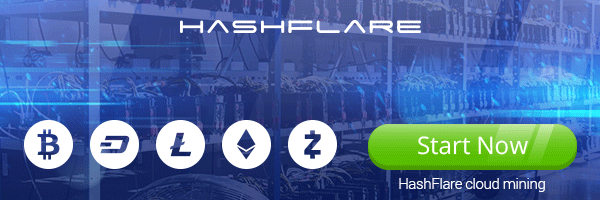
With adoption accelerating, blockchain’s potential to transform life in every way — from how business is conducted to labor division, operating systems and methods of collaboration — comes closer to fruition every day. If blockchain is the foundation to a truly digital model, then governance is the key to linking together the on and off-chain worlds. Governance itself encompasses and dictates the functionality of blockchain, from its organization structure to workflow execution, voting and incentives.
Conceptually, governance can be understood as on and off-chain; the former being divided into protocol and contract levels. With the blockchain space rapidly diversifying, governance is also rapidly evolving to drive new and novel forms of collaboration, interaction, profit distribution and risk structure, based on each chain’s unique profit value.
Today’s on- and off-chain governance paradigms
Moving forward, I believe there are several premises that must be accounted for when building governance frameworks.
First, the digital world cannot be separated from reality. Like the off-chain world, on-chain governance also includes a two-tier structure, under which governing units serve as capital for users to engage in various democratic processes. Moreover, external on-chain governance components such as, server clusters, nodes and other infrastructures, dictate how capital rights and interests are addressed. On-chain governance dictates the usage of external funds, energy and human resources. It is also constructing new identities, ways of participating and power relations. In short, on-chain governance is both a reflection of today’s paradigm and a looking glass into the future.
Secondly, the on and off-chain worlds are merging as the boundaries between social and corporate governance become increasingly blurred. While blockchain started off as more focused on economic governance, this focus has shifted in recent years with institutions and enterprises experimenting with blockchain to achieve more efficient social governance. As the line between corporate and economic governance thins out, each chain’s future will slowly but surely hinge on the interests and will of their user base, thus significantly bolstering the pressing need for next generation governance at the protocol level.
Thirdly, the market is currently dominated by stake-weighted voting, which gravitates towards greater centralization, dynamic adjustments and third-party proxy agents. Given blockchain’s fundamentally decentralized nature, on-chain governance depends heavily upon a network’s consensus mechanism of choice — which can be understood as the negotiation method by which the interests and rights of community developers, miners and token holders. Within the context of proof-of-work, or PoW, consensus, the emphasis is on workload. It would require a high level of centralized authority and responsibility to validate parties’ work, rather than relying on the code to autonomously validate miners’ work. In that way, PoW is essentially the same as traditional decision-making.
However, under proof-of-stake voting, the following scenarios will enable greater democracy and decentralization:
One person, one vote based on identity.Secondary voting based on identity.Hashing power voting.Voting for transaction fees at the account level.Voting of transaction fees at the contract layer.Election Committee.Relative majority voting method.Other pledge-related indicators, including long-term node maintenance, long-term binding validators, long-term coin holders, oracles and clients.Any combination of the above modes.
Fourth, there are still various design issues related to on-chain governance. Under today’s governance systems, power tends to be concentrated in the hands of a few. Moreover, low-voting rates also negatively impact the effectiveness of governance and network security. Thus, future innovations in governance must also address the aforementioned concerns from a design level by offering voting stronger incentives for stakeholders, while also introducing loosely coupled voting to ensure more representative governance.
Overall, the current paradigm illustrates that on-chain governance represents the transformation of the digital world’s economic and social organization. With the advent of the digital age, people’s identities have been increasingly split between various governance entities, rather than resting in the hands of a single one. By introducing new organizational structures and concepts, we can pioneer a completely new incentive mechanism to optimize on- and off-chain governance, beyond what simple corporate structuring can achieve.
Based on these premises, sustainable and effective governance must satisfy the following requirements:
A two-way mechanism to interact with the real world.Comprehensive social governance.Movement towards achieving the community’s vision.Effective incentives and punishments through comprehensive mechanisms.Clearly delineated responsibilities and powers for on-chain governance.
Structuring on-chain governance to drive sustainability and adoption
If we understand governance as a key driver for blockchain adoption, networks must approach decisions, such as consensus mechanisms, various participants’ roles — and more — with great care and deliberation. Moreover, to bring together the on and off-chain worlds, on-chain governance must evolve to enable the following:
The mapping of real-world legal units or jurisdictions to the chain.A comprehensive identity system which ties network participants’ identity to their social identity.Participation in governance via greater rights with the caveat that such rights can be revoked in.
By leveraging code, on-chain governance enables the elimination of uncertainties to create binding agreements, ensuring that any approved network changes will be implemented. Moreover, on-chain governance also incentivizes greater responsibility, due to blockchain’s inherently transparent nature, thus ensuring a decision-making trail. On top of bolstering community trust and fairness, this transparency also empowers users to make informed choices regarding which platforms they join.
However, as previously mentioned, today’s governance systems still face design issues — namely low turnout rates and the manipulation of voters by powerful token holders. Regarding the latter, there is still the concern that governance systems favor powerful token holders. This results in greater emphasis on profit generation, rather than achieving a public blockchain’s vision.
Thus, I propose the key components for effective governance, namely:
Coordination mechanisms: To ensure sustainability, transaction costs and user usage must be coordinated to minimize conflicts between users and stakeholders. As transaction fees heavily influence a user’s ability to participate in a network, maintaining low and stable costs incentivize their participation, which is key for representative governance and network security. In short, the aforementioned mechanism would allow users — the true holders of the network — to be able to participate.
Coordination between currency holders and governance participants: To realize effective governance and ensure that the chain’s interests are represented, there must be significant overlap. Such measures like economic incentives and elections, or the decoupling of governance rights from tokens, are necessary to create more overlap between these groups.
Coordination of candidates and selected candidates: To ensure network efficiency, elections must also implement screening mechanisms to secure the right number of candidates to meet platform needs. Moreover, platforms must provide a proper balance of economic incentives, powers and responsibilities for long-term and stable governance.
Incentive measures: To reward participation, the following incentives should be provided:
User: Ability to use DApp; low-cost network service.Token Holders: GAS or token issuance via voting.Nodes: Receive transaction fees for packaged transactions or network fees for winning elections.
Consequences:
Token Holders: Opportunity costs.Nodes: Fines for misbehavior.
Overall, effective governance must fulfill the following conditions — first, decision-making that is based on complete and symmetrical information. Second, there is a cost associated with making and changing choices. Finally, governance must be flexible enough to drive forward organization interest while accounting for individual choice.
Driving flexible, dynamic and sustainable governance to win the future
Based on the aforementioned points, I believe that “elastic manageability”, defined as “an ability to adapt to various social jurisdictions,” is the governance solution for both now and the future. Through elastic manageability, we can coordinate the interests of various parties, balance decentralization and centralization, and establish an effective incentives and consequences system. Through an on-chain identity system and node verification, we can connect the on-chain and off-chain world for true integration.
Under this system, I believe the two key mechanisms are as follows:
Coordination mechanisms.Dual-track election mechanisms.
Token holders can vote on the direction for a community-based organization, which is entrusted to act in the platform’s best interests. To incentivize participation and ensure representational change, direct incentives, such as tokens, should be issued based on the token holders’ degree of participation. From my perspective, enabling users to vote for representational institutions and consensus nodes enables a platform to dynamically adjust based on changing community and industry needs.
Moreover, an on-chain identity system is also crucial. As previously noted, the on-chain world cannot be disconnected from the off-chain world. Rather, the sovereign states and legal jurisdictions of the real world must be mapped onto the chain. Governance mechanisms should reflect this through an on-chain social identity system, which reflects users’ on-chain address and transaction records, decentralized identifier documents, and registration jurisdiction. Based on these aspects, users’ off-chain regulations will provide soft guidance for on-chain activity by jurisdiction.
The types of services provided on the public chain could be affected by local regulations. This real world identity mapping, along with dynamic elections, means that token holders are empowered to make decisions and adjust accordingly for future transactions. When processing transactions, different nodes will react differently to different types of transactions, which will affect the types of services processed on the public blockchain to varying degrees.
For example, for a certain type of specific transaction, consensus nodes that exceed the fault tolerance rate cannot pass this type of transaction, due to the influence of the local judicial system. At this time, the judicial influence on this type of specific transaction is reflected in the public chain. Under the framework of dynamic elections, token holders will then make a decision whether to continue to vote for the affected nodes in the next term. Node candidates can also make adjustments according to the voter’s strategy.
Added value through dynamic elections
Through this flexible and dynamic management system, I believe we can fully understand decentralized on-chain business management, node operation management and on-chain voting governance. Local regulations affect the voters’ strategic choices and indirectly affect the behavior of network participants.
Through repeated governance cycles, blockchains eventually move towards developing a balance, which incorporates the interest of all — including real world concerns. This opens up the path for sustainable and responsible growth both in the on- and off-chain world.
The views, thoughts and opinions expressed here are the author’s alone and do not necessarily reflect or represent the views and opinions of Cointelegraph.
Da Hongfei is best known for co-founding the blockchain-based “Smart Economy” network Neo with Erick Zhang in 2014. Da received his education at the South China University of Technology, receiving degrees in technology and English. He worked at a consulting firm until 2013, after which he learned how to code before founding Neo. Along with Zhang, Da also founded OnChain — a commercial blockchain firm that provides services to private companies.





 Bitcoin
Bitcoin  Ethereum
Ethereum  Tether
Tether  XRP
XRP  Solana
Solana  USDC
USDC  TRON
TRON  Dogecoin
Dogecoin  Lido Staked Ether
Lido Staked Ether
Be the first to comment